Snow in Yosemite Valley
7 Comments
Today marks the official start of the spring, while the weekend saw the re-opening of Yosemite National Park. The park had been closed since February 25, the second longest closure in memory – floods in 1997 closed the park for over two months. The closure of this winter was caused by unusually deep snow. On February 28, 40 inches of snow had accumulated in Yosemite Valley, a record for the date. Higher elevations had received more than 180 inches.
While those higher elevations are covered by snow each winter, snow is not a given in Yosemite Valley. Located at an elevation of around 4,000 feet, the valley hardly receives any snow some years. Typically, most winter storms blanket the mountains surrounding the valley with snow but leave the valley itself looking bleak and muddy. Seeing the valley floor covered with snow is a relatively rare treat, and even rarer is the sight of everything covered with snow. Perhaps right after a winter storm is when Yosemite Valley is most picturesque. Snow clings to every branch and rock, as mist fills up the air. Those were the conditions when two of the most well-known photographs of Yosemite were made: Ansel Adams Clearing Winter Storm (1944) in black and white, and Galen Rowell Clearing Storm over El Capitan (1973) in color.
Since my first visit in February 1993, I had been regularly returning to Yosemite Valley, not only for rock climbing but also to photograph. However, for several years, despite dozens of visits, I remained disappointed with the results of my efforts and felt I didn’t manage to capture any of the valley’s magic. Inspired by the two photographs above-mentioned, I decided to try a new approach. At that time, I was working as a computer scientist, so my excursions to Yosemite had always been at pre-planned times, on weekends except for the occasional longer big-wall climb. In the winter of 1998, I figured out that I could not just show up and hope something interesting may happen, but that instead, I should watch the weather conditions in order to come when something was happening. Naturally, that “something” was a clearing winter storm.
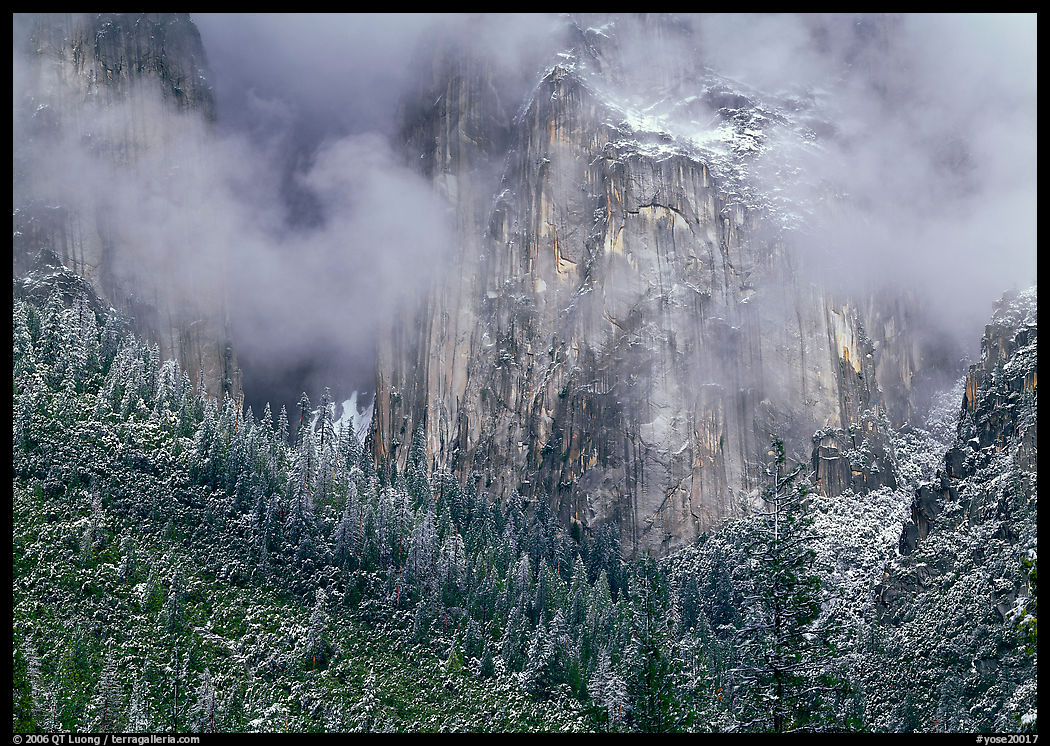
For my first post-storm visit, I left my home in Menlo Park, CA shortly before sunrise. The most direct route to Yosemite is via Oakdale and CA-120, but the highway climbs over to 6,000 feet elevation near Crane Flat before descending to Yosemite Valley. With fresh snow in the offing, I drove instead CA-140 via Mariposa, following the lower-elevation Merced Canyon and entering the park at El Portal (1,940 feet), near its lowest point. Delighted to see the first light highlighting a wonderland of fresh snow at Midpines, the high point of CA-140, I stopped to take a few pictures. When I arrived in Yosemite Valley in the late morning, I immediately regretted that pause. As the sun had already been up for a couple of hours, the snow was melting and falling from the trees. Most of them were bare of snow. High up the cliff, mist was still swirling along the rock walls, and a dusting of snow could still be seen. I quickly pulled out my large-format camera and used the longest lens I had, a 450mm lens (roughly equivalent to 90mm on full-frame) to frame a tight composition. The photograph is memorable to me because it was the first I made of a clearing winter storm in Yosemite. Without obvious landmarks, it evokes the power of the place. Yet, I immediately realized I had to adjust my timing for the next time.
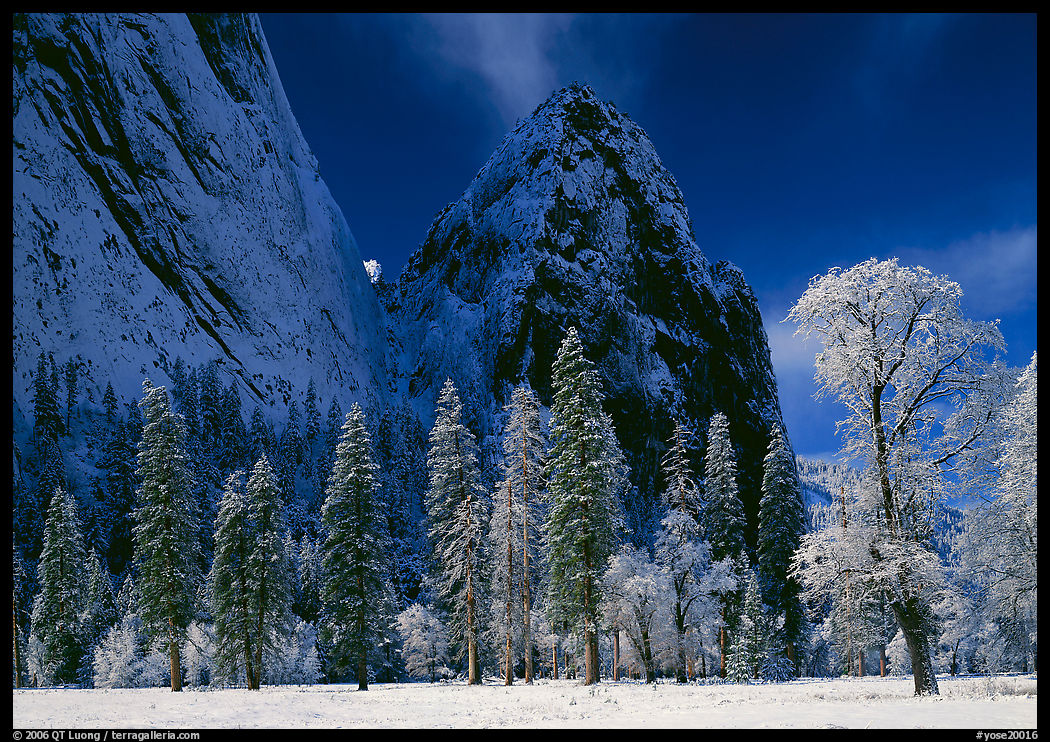
Winter is the season when Yosemite receives the most precipitation. I was given a second chance that same winter when another storm with a snow level below 4,000 feet was forecasted to clear during the night. Because I was working in a research institute, it wasn’t a problem to be out of the office on a weekday. Leaving home in the middle of the night, I arrived at El Capitan Meadow, my favorite spot in Yosemite Valley, before the sun reached it, and immediately began to plan my photographs. For my first composition, I used a normal lens and included two focal points: the frozen oak tree detached against the sky on the right, and the snowy top of the Leaning Tower peeking between the masses of Lower and Middle Cathedral Rocks that attracts the eye with its brightness and contrast despite its tiny size – in a large print frozen trees are visible on the peak. In the summer, the shaded rock walls would look lifeless, but the fresh snow clinging to their steep faces created a beautiful tint by reflecting the blue sky. After setting up the large-format camera while El Capitan Meadow was still in the shade, I waited for the sun and made the exposure less than a minute after the entire meadow was lit.
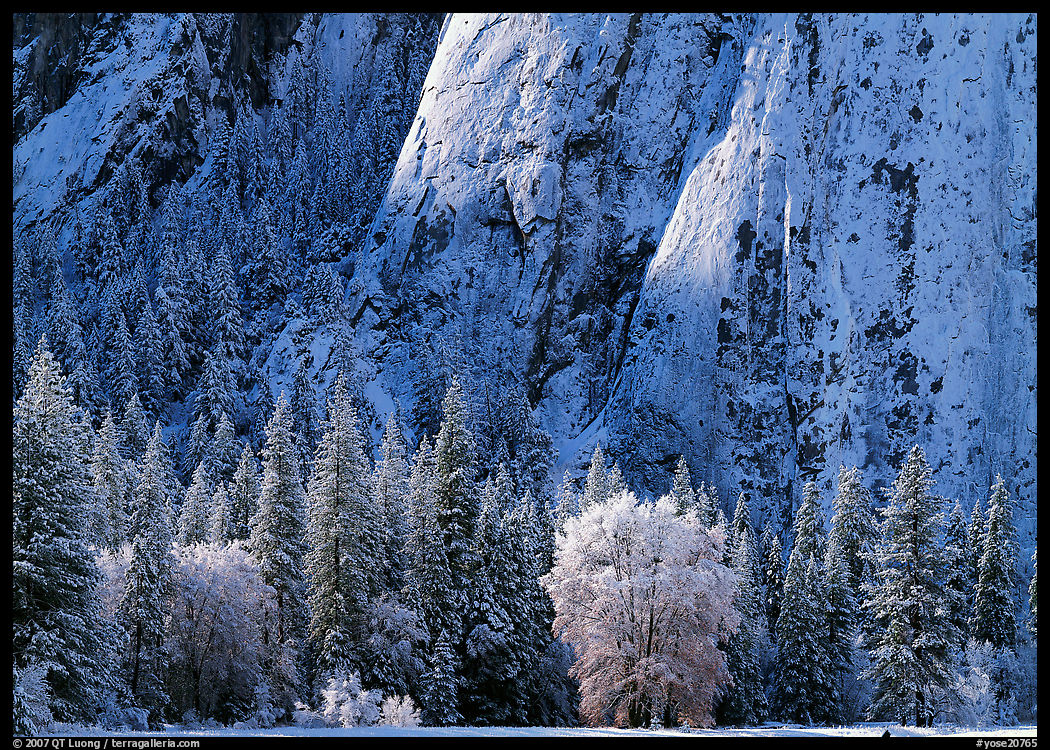
Afterward, in a state of flow, I promptly switched to a longer lens for a study in textures, isolating a cottonwood tree caressed by the early morning light at the base of Middle Cathedral Rocks whose north face was strikingly blanketed by snow. The pine trees added a subtle hint of green, noticeable because of the homogeneity of the skyless composition dominated by the blue of open shade. Walking a few hundred yards to the bridge, I used the widest lens I had for that camera (a 90mm lens, equivalent to 18mm on full-frame) to include the entire scene with the two iconic rock formations, the Merced River, and El Capitan Meadows, taking advantage of wispy clouds.
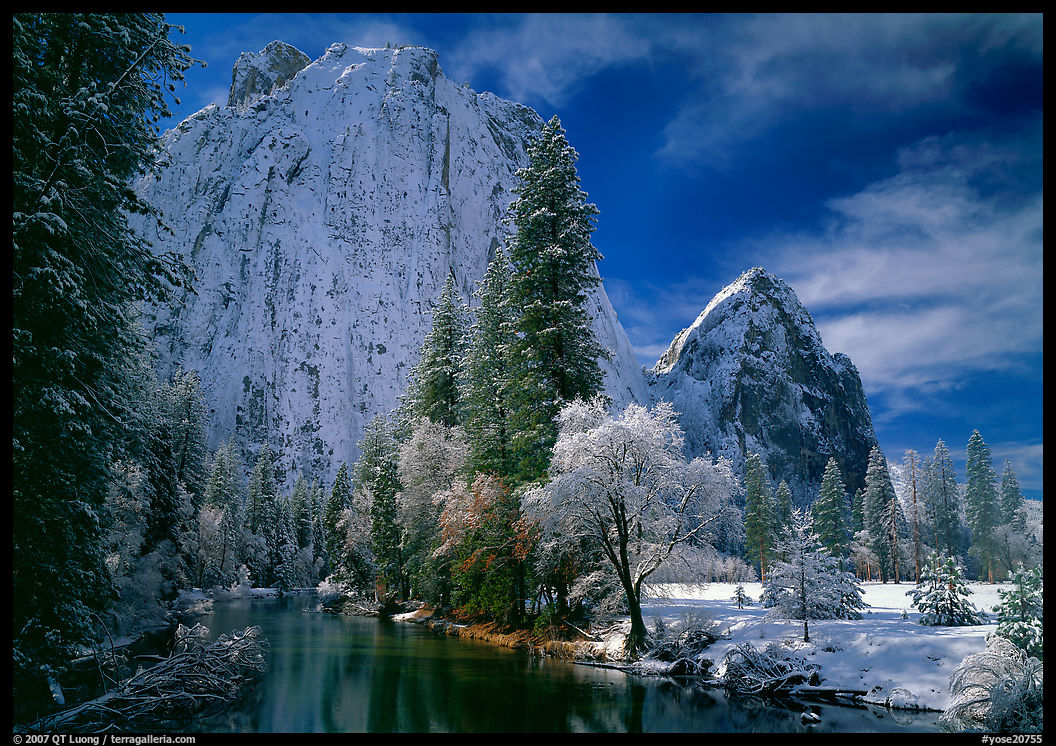
This wintry moment turned out to be as fleeting as I expected it to be. Within an hour of the sun’s appearance, the conifer trees were already more dark-green than white. With snow on the ground, but not on the trees, the ground of a meadow appears distractingly bright compared to the rest of the scene. I drove a few minutes to the Valley View where I could use a foreground of rocks and water instead of a snowy meadow. Although the snow had been melting fast, not everything was lost as some mist was still hanging out high along rock walls while clouds remained wispy enough to echo the snow on the distant meadow and peaks. Unlike others, the image is of course a well-worn composition, but it was still the most satisfying I had made at that location.
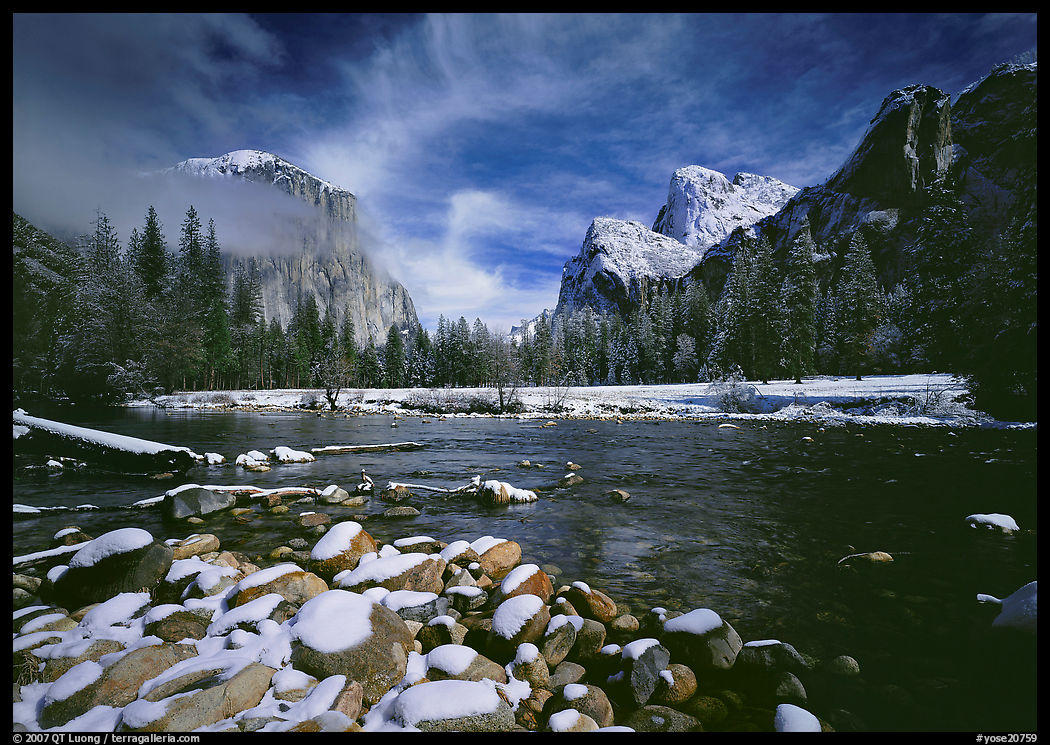
I left the valley in the late morning, returning to work in the mid-afternoon with a broad smile. For the first time in five years, I was pleased with the way a Yosemite photography session had turned out. It could just be that with my penchant for climbing snow-covered peaks, a mountain scene without snow was missing an element that resonated with me. But I think it was a pivotal moment because, besides the experience and beauty I was privileged to witness, I felt that I had made something happen. The morning was productive. The two first images on this page turned quickly among the first set of prints (made in Cibachrome) that I ever sold.


Beautiful! I was scheduled to be in Yosemite in early March, hoping for some snow in my photos, but wasn’t expecting 15 feet. Needless to say we didn’t get into the park, but were able to reroute and visit Pinnacles National Park, a new one on my list. I found something you wrote about where to get good sunrise photos and find condors along the High Peaks Trail, and took that advice for a wonderful morning hike and a few nice shots.
I did the same in the year 2017. Drove to Yosemite to find out the park had been closed – the concern was trees falling due to heavy snows and ended up in Pinnacles, where I made the first photograph in this article: https://www.terragalleria.com/blog/pinnacles-moses-spring-waterfall-at-least/
QT:
Thanks for your blog post on snow in the valley. I am wondering if this recent rare heavy snow event, was even witnessed by any camera? Were the rangers the only ones to see this, or was it only witnessed by the outside world through the webcams? How sad that would be, but I realize there is a safety issue for the visiting public with so much snow.
Your realization in the winter of 1998 to watch the weather conditions when “something” was happening, reminds me of something that Galen constantly stressed, that it is the “edges” of something that cause visual excitement, the edge of morning light touching the dark shadows of night, the edges of water lapping against the edge of the shoreline, and the clearing storm, providing dynamic lighting conditions. I need to remember that when I am standing with my camera on the tripod at high noon, and thinking “the lighting is not very exciting!”
Yes, it was captured on camera. I was there and one of the last to leave when they evacuated the park. Note that it was Firefall season. While many photographers were disappointed and left early, I stayed until the very end knowing that such intense snowstorm was a rarer sight than the Firefall. I had Yosemite almost all to myself for a few days, a surreal experience. I posted some photos on Instagram. My IG id is tommyeng1. Enjoy.
Well done Tommy!
That’s a profound observation about “edges”. Further, you could say the work of a photographer like Robert Adams was all about the edges of nature and civilization.
Superb photos. I had felt sad reading about the snowfall and not being able to see it, so i am so happy to see your beautiful capturing of the beauty. Good for you to stay to the last evacuation and capture this beauty. Thank you for sharing it with us.